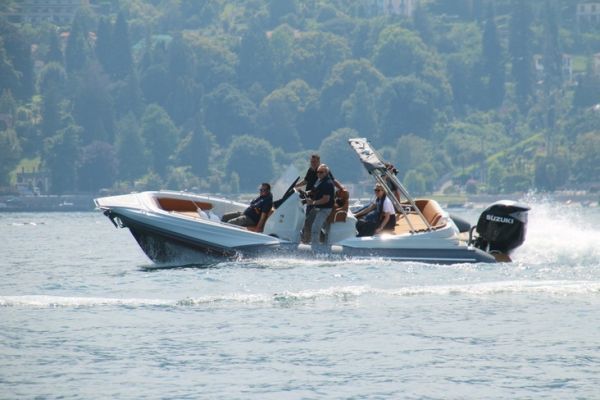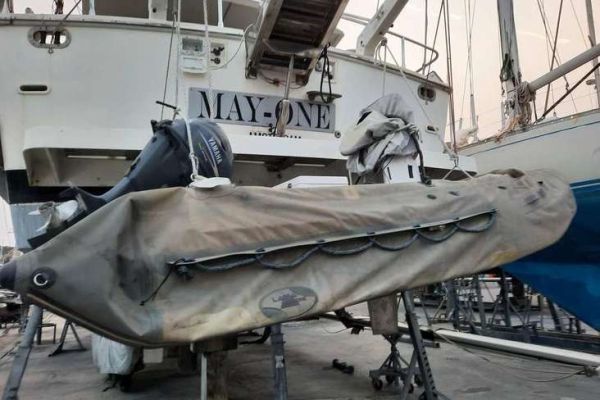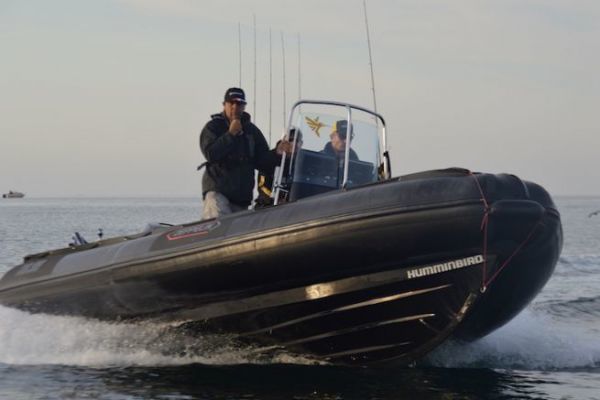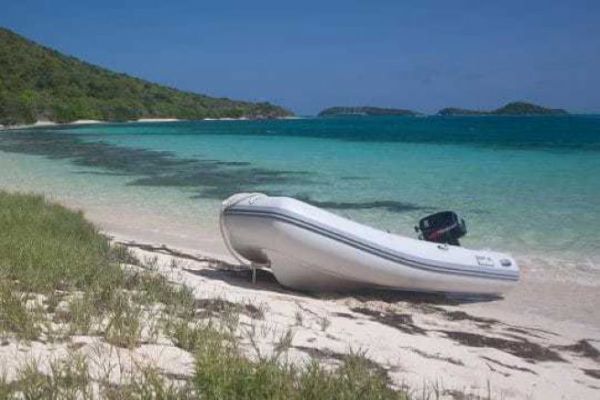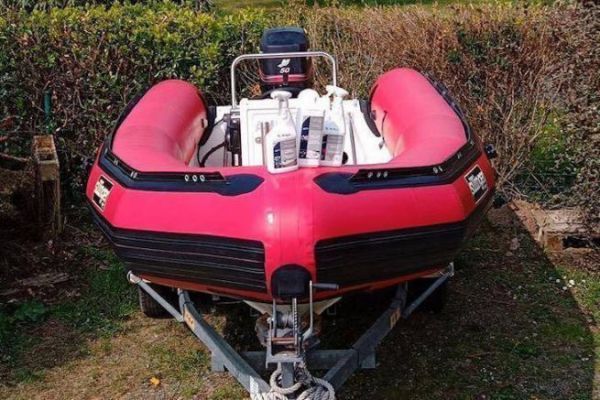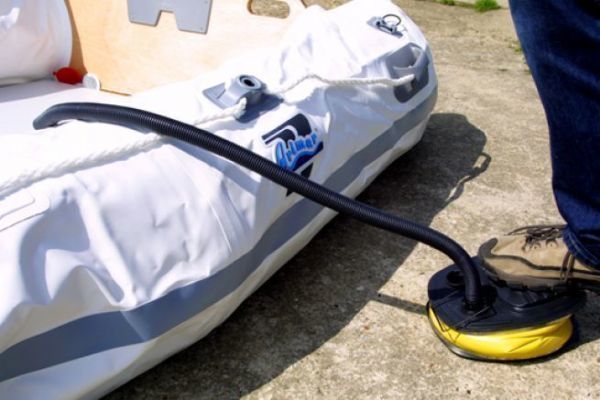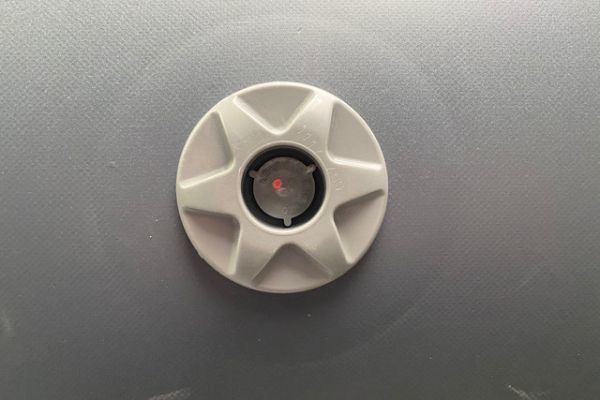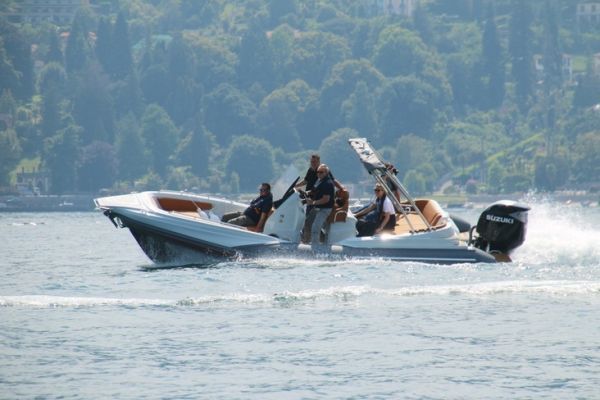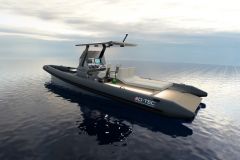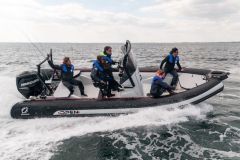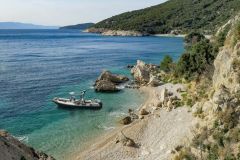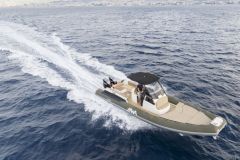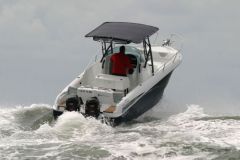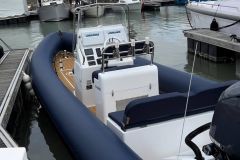RIBs are becoming an increasingly important part of the pleasure boat fleet. Maintenance, choice of float fabric, storage... Both novice and experienced boaters have many questions about RIBs. We put them to Simon Marette, founder of North Boat and RIB specialist.
Which fabric should I choose for my RIB? PVC or hypalon?
It all depends on the application. Hypalon is inevitably more expensive and of better quality. It also depends on storage. A boat taken out of the water after each use, and stored in a dry place, can easily be made of PVC and meet its owner's needs for a long time to come. If the boat is stored on a pontoon, you're better off with hypalon.
It all depends on use and storage. The lifespan of PVC will be halved if the boat is left unprotected rather than stored dry.
Do I have to rinse my floats after every trip?
Yes, to get rid of as much salt as possible, as with any boat, equipment or trailer. You need to rinse your boat systematically, as the salt remains and settles on the floats and mechanical parts... It becomes aggressive over time.
Can I leave my RIB in the water all year round without risk to my floats?
For a RIB, this is not necessarily the best solution. Salt, hydrocarbons and bird droppings will, after a while, attack the fabric and be harmful. Fabric doesn't like acidity. Ideally, if you want to keep your RIB in the water, you should use floating pontoons to prevent the floats from remaining permanently in the water. For example, a PVC RIB that remains in the water all year round is likely to have a fabric that breaks much more quickly. Antifouling can be applied to PVC floats, but it's fairly aggressive. It contains solvent, and the PVC won't withstand it for years. Leaving a PVC RIB in the water all year round reduces its lifespan.
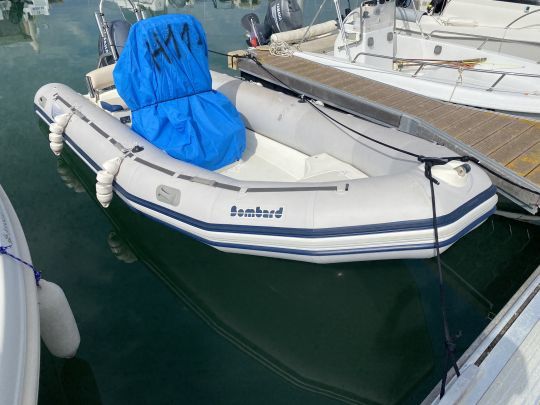
How to maintain your floats
It's essential to carry out preventive routine maintenance and keep your float clean. When you winterize your boat, you wash it from top to bottom, air it out and dry it... When you put your boat back in the water, there are some interesting waxes and sun creams to protect it from salt. These products are conclusive.
But be careful. The best is the enemy of the good. If the float is not dirty, there's no reason to use aggressive products. Just don't use them every time you go out. They will accelerate the ageing process. You need to adapt and use more or less aggressive products, depending on how dirty the float is.
We also need to differentiate between people who use their boat on a daily basis and those who use it once a year.
Float pressure must also be checked. A completely deflated float will permanently pull on the glue joints. But they must hold the floats in shape. The glued joints are not designed to hold a deflated float on a hull.
Should I change my floats regularly?
First, you need to differentiate between PVC and hypalon. Composite can have a lifespan of 30 to 40 years. A semi-rigid bladder lasts between 10 and 20 years on average. It's a thin fabric, more fragile than fiber. Whether PVC or hypalon, UV rays, hydrocarbons and salt will attack the fabric, as is the case with sails and upholstery.
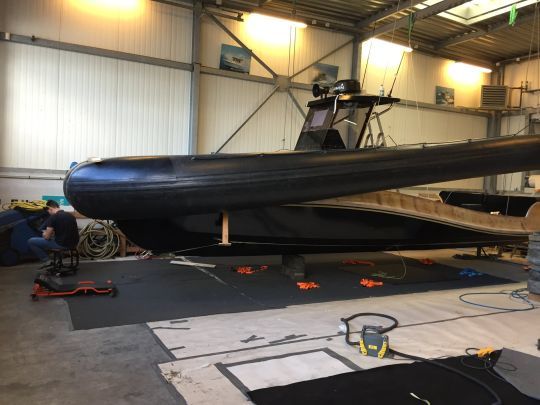
How often should I check the pressure and how do I do it?
In season, as soon as there are major temperature changes. Check with a pressure gauge or, more simply, with inflators that stop at the desired pressure. The cheapest is an electric paddle inflator. The most practical and efficient are dedicated products available from any boat builder.
In use, you get a much better feel for boat pressure. You have to inflate your boat to the minimum pressure. In summer, when the boat is in storage, the pressure should be lowered to 150 millibars to cope with pressure drops and rises. For the inflator, 250 mbar corresponds to 3.6 PSI. Paddles are generally inflated to a minimum of 1000 mbar (1 bar), i.e. 15 PSI, so even the smallest can easily inflate a RIB.
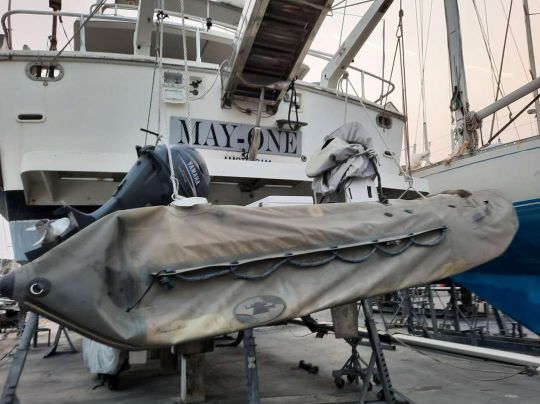
Can I pierce my bladder with a fishing hook?
Yes, very easily, although hypalon will be more resistant to perforation because the weft of the fabric is stronger and finer. With the democratization of RIBs, more and more fishermen are turning them into their fishing boats. There are far fewer worries about fishing-related punctures. But it's not just the hook. You also have to watch out for fish and their barbels, such as sea bass or bream spines. To guard against fish with sharp spines, you need to use the landing net systematically to get your fish out of the water. You'll be able to control where you put it. And it's the same for the release. A big bass under stress can send a thorn into the float.
Are there any fabric colors to choose from?
Color has an impact on float heat. A light-colored float will take on less heat than a dark float. A bit like a car. It will either capture heat or reflect it. The best compromise is gray. It's less messy and captures less temperature.
If PVC fabric, which is dyed plastic, captures too much heat, the fabric will heat up more, and therefore tend to capture more UV rays. In hypalon, color can also affect fabric performance.
In any case, light colors are dirtier. Beware, too, of sunscreen, fish blood and bird droppings, all of which are difficult to remove or maintain.
Can I walk with any shoe on my floats?
The average thickness of float fabric is barely 2 mm. This is not a rigid gelcoat, but a flexible material. Some soles can pick up pebbles, and black soles can leave marks. So you need to adapt your footwear, as you would on any boat.
Is a RIB suitable for beaching?
It's possible, but it will create friction on the float. Over time, this friction will have an impact on the fabric. It's important not to do this over the long term, to avoid accelerated wear of the board. It's best to leave the boat in harbor, sheltered from the wind.
